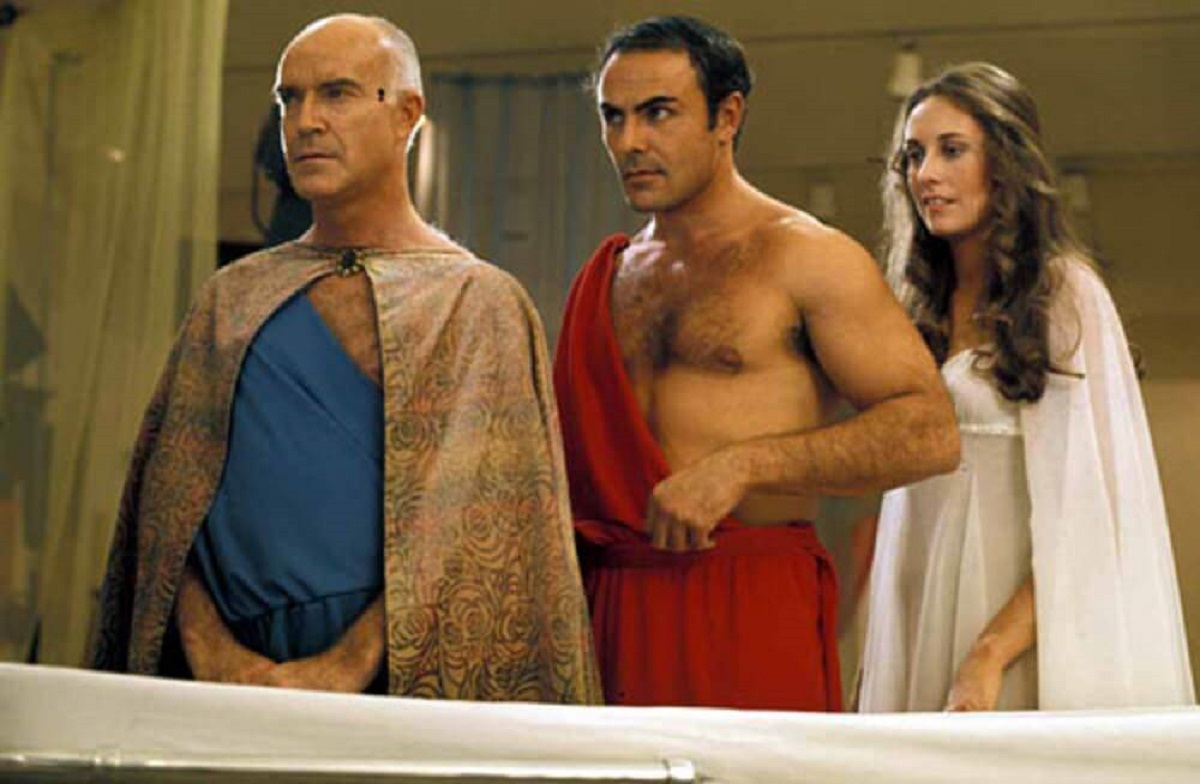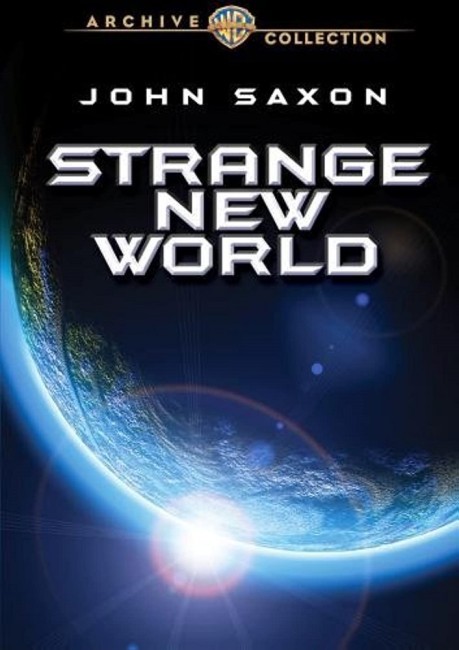USA. 1975.
Crew
Director – Robert Butler, Teleplay – Ronald F. Graham, Walon Green & Alvin Ramrus, Producer – Robert E. Larson, Photography – Michael Margulies, Music – Richard Clements & Elliot Kaplan, Theme – Richard Clements, Art Direction – Jack Martin Smith. Production Company – Warner Bros Television.
Cast
John Saxon (Captain Anthony Vico), Keene Curtis (Dr William Scott), Kathleen Miller (Dr Allison Crowley), James Olson (Surgeon), Martine Beswick (Tana), Reb Brown (Sprang), Ford Rainey (Sirius), Bill McKinney (Badger), Gerrit Graham (Daniel)
Plot
A three-person team under Captain Anthony Vico is aboard the PAX space station undergoing an experiment in cryogenics. The Earth is struck by a swarm of meteorites. Just before this, the PAX satellite is sent into solar orbit with the crew set to reawaken in 180 years’ time. Various PAX scientists and the team’s families are placed in cryogenic suspension in a bunker on Earth to await their return. The team aboard the satellite now awaken. They return to Earth and cross the post-apocalyptic landscape in a vehicle searching for the bunker. They come across Eternia, a utopian society where people are cloned and replaced whenever killed, where the group’s blood is seen as being able to refresh Eternia’s depleted gene stock. Dr Crowley is then abducted by a society of former zookeepers who live as savages where the others must make a deal with a rival tribe to rescue her.
Gene Roddenberry was the creator of Star Trek (1966-9) and gained a legendary name in fandom as a result. For all that, Roddenberry never found that same success again until he revisited the original with Star Trek: The Next Generation (1987-94). Throughout the 1970s, Roddenberry had made several attempts to launch other tv series. One of these attempts was Genesis II (1973), a variant on Buck Rogers with Alex Cord as Dylan Hunt, a 20th Century man awoken in the 24th Century where he joins the scientific group PAX as they try to unite various disparate post-apocalyptic societies. Warner Brothers wavered over greenlighting Genesis II as a full series but did order a second pilot with Planet Earth (1974) where the role of Dylan Hunt was recast with John Saxon.
Strange New World was a third attempt to launch the Genesis II idea. By this point, Gene Roddenberry had either departed or been dropped (I am unable to find any information that indicates which was the case). The film still retains John Saxon, who was the lead in Planet Earth, as the man unfrozen in a post-apocalyptic future, although this time he gets a new name Anthony Vico. He is now also joined by two others and is no longer frozen in the Carlsbad Caverns but in an orbiting satellite to be revived after the earth is struck by a catastrophe. (This makes somewhat more sense than Roddenberry’s conception of a man who participates in a cryogenic experiment and then just gets forgotten until he is woken up a few hundred years later). There is still the scientific organisation PAX, although they have a slightly different purpose this time. Despite these changes, Strange New World fared no better than its two predecessors. However, the Genesis II concept was later developed out as the tv series Andromeda (2000-5) with Kevin Sorbo cast as Dylan Hunt and the post-apocalyptic quest format made into a space expedition.
The Genesis II series never sold but it would appear that at least two episodes were filmed. Strange New World feels less like a pilot film than a compilation made up of two episodes thrown together, along with some voiceover narration to give background explanation for the scenario. As with other tv series of the era such as Planet of the Apes (1974) and in particular Ark II (1978) and Logan’s Run (1977), the premise has the group travelling across the Post-Apocalyptic landscape in a futuristic vehicle – on the pretext of searching for the shelter where their colleagues and families are preserved – encountering various societies along the way. In all of these series, the societies encountered fall into the Star Trek model where they are straw dystopias or anti-Utopias where the Man of Action hero acts as a disruptive force.

All of that said, you can see why the Strange New World iteration of Genesis II never went to series. The two stories we do get are as dull as it gets. The first of these is a standard plastic vacuform Dystopia, numerous variations of which appeared in other shows around this period. The peoples of this world – which include James Olson from The Andromeda Strain (1971), cult British Anglo-horror actress and Bond girl Martine Beswick, and Reb Brown who later became Captain America (1979) – have an interchangeable series of schemes involving cloning, immortality by constant rejuvenation and need to obtain the visitors’ blood to replenish their gene pool. The visitors bring it all crashing down, which does come with the unintentionally funny sight of John Saxon engaged in fight scenes while wearing a toga.
This is at least the best of the two episodes. The second episode is the dullest of the two. Here the party encounter a group of people that have reverted to primitive tribes. There are the intriguingly unexplored notions that they can communicate with animals and have an old US Department of Conservation manual as their Bible. However, the episode consists of nothing more than largely uneventful action running around in the woods between the two different factions.
The film co-written by Walon Green who was then best known as the screenwriter for The Wild Bunch (1969) and subsequently William Friedkin’s Sorcerer (1977) and estimable tv series such as Hill Street Blues (1981-7), Law and Order (1990-2010), NYPD Blue (1993-2005) and ER (1996-2009). Since then, Green has been a regular tv writer and producer, most notedly with the various incarnations of Law and Order, He has delivered scripts for occasional other genre works including Solarbabies (1986), RoboCop 2 (1990), Without Warning (1994), Eraser (1996) and Dinosaur (2000). As director, he has made several documentaries, most notedly the alarming The Hellstrom Chronicle (1971), which comes with the thesis that the insect kingdom is going to overrun humanity.
Director Robert Butler had worked in tv since the early days, making episodes of The Twilight Zone (1959-63), The Untouchables (1959-63) and including the Star Trek pilot The Cage (1966), among a good many other shows. He made several Disney films with The Computer Wore Tennis Shoes (1969), The Barefoot Executive (1971) and Now You See Him, Now You Don’t (1972). His last theatrical film was the serial killer on a plane film Turbulence (1997).
Full film available here

